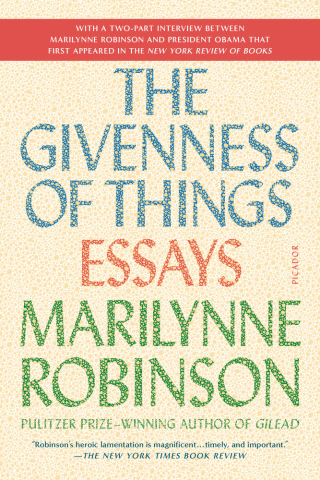
Scott Korb in the LA Review of Books:
In her nonfiction, Robinson often confronts the gap between herself and her fellow Christians. Her 2006 essay “Onward, Christian Liberals” draws those lines in language that is, from the start, as confrontational as it is introspective. She begins: “I realize that in attempting to write on the subject of personal holiness, I encounter interference in my mind between my own sense of the life of the soul and understandings that are now pervasive and very little questioned.” My own students have taken a great deal of time figuring out what she means in this opening line; at a secular university, they’re often less comfortable than Robinson discussing personal holiness and the life of the soul. Robinson’s initial obliqueness with regard to her opponents is also cause for some confusion. Nevertheless, she eventually sums up those pervasive and little-questioned understandings quite clearly and with distinctive good humor — she appreciates a joke as much as anybody — by contrasting them with the teachings of Christ:
[T]he supposed Christian revival of today has given something very like unlimited moral authority to money, though Jesus did say (and I think a literal interpretation is appropriate here if anywhere), “Woe to you who are rich!” (Luke 6:24) If this seems radical, dangerous, unfair, un-American, then those who make such criticisms should at least have the candor to acknowledge that their quarrel is with Jesus.
Robinson approaches a related gap between herself and other Christians in a later essay, “Wondrous Love,” from 2010 — although by this time her tone has grown somewhat doleful: “[T]he fact is that we differ on this crucial point, on how we are to see the figure of Christ.”
Taking up, for instance, the awareness that Christ’s preaching (which was itself “a new understanding of traditional faith”) would divide families, she rereads what’s been called “the sword of the Lord” passage from Matthew’s gospel — “Do not think I have come to bring peace on earth: I have come not to bring peace, but a sword” — as an “inevitable and regrettable” notion, for him, in his time. “In the narrative as I understand it,” Robinson concludes, “his words would have been heavy with sorrow” — a bit like hers here, a bit like Obama’s. Those who would want to use this passage from Matthew — both historically, and even still today — as evidence that Christ promoteddivision, denunciation, or murder, for the sake of Christianity, see him differently than Robinson does.
More here.
